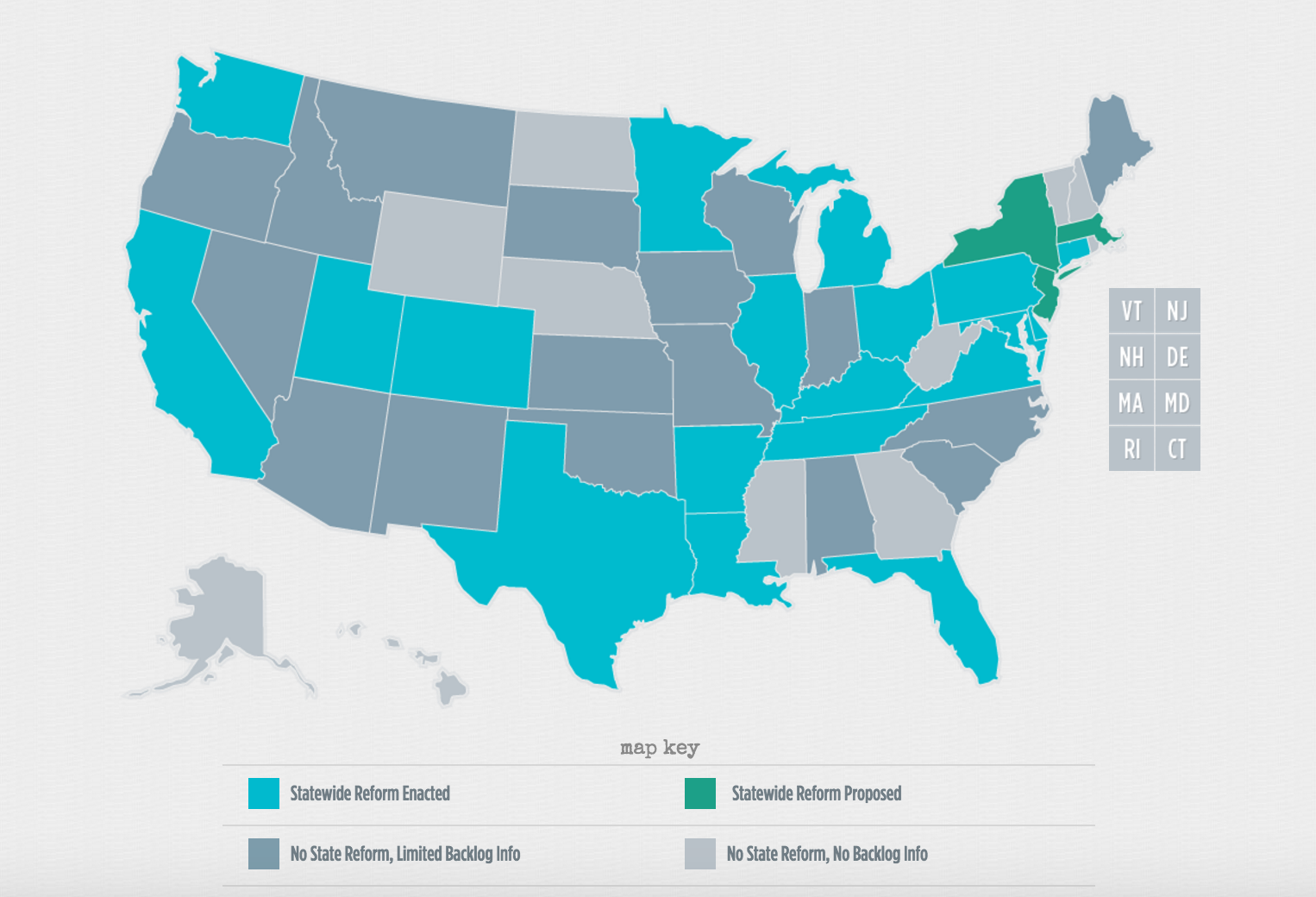A Survivor Explains The Sad Reason It Took 10 Years to Find Her Rapist

By:
In 1993, Natasha* was violently raped, sodomized, and robbed at gun point in New York City. Back then, DNA profiling was still in its infancy. After she escaped her attacker and made her way back to her apartment, her roommate insisted that she go to the hospital to have a medical examination and rape kit completed.
RELATED: The Unacceptable Reason Rape Kits Take so Long to Be Tested
Natasha heard nothing for 10 years, until the New York City District Attorney’s office called her in 2003 to testify before a grand jury. Four years later, they found Natasha’s rapist through his DNA profile.
Fifteen years after the initial assault, in 2008, Victor Rondon was found guilty on all 8 counts of violent assault against Natasha.
“Nobody wants to talk about rape," Natasha tells ATTN:, "But we really need to."
The scope of the problem.
Every year in America, there are an average of 293,066 victims of sexual assault age 12 or older, according to the U.S. Department of Justice’s National Crime Victimization Survey (NCVS). The survey estimates that the actual number is much higher, since sexual assault is one of the most under-reported crimes in the U.S. for a multitude of complex reasons.
And when survivors do choose to report their assault to law enforcement, it can be difficult or impossible to convict the perpetrator—in part because evidence of the assault is sitting on a shelf.
RELATED: BILL COSBY'S ACCUSERS JUST GAVE A CHILLING INTERVIEW
What is a rape kit?
A rape kit refers to a container of materials used to collect DNA evidence in a sexual assault forensic exam, according to the Rape Abuse & Incest National Network (RAINN). After a person is sexually assaulted, DNA evidence can be gathered and used as a powerful tool to solve and prevent crime, RAINN notes. Some materials that may be found in a rape kit include:
- Bags and paper sheets for evidence collection
- Comb
- Documentation forms
- Envelopes
- Instructions
- Materials for blood samples
- Swabs
Rape kits serve as physical evidence of a sexual assault and can be used to aid the officials who are trying to identify the perpetrator, hold him or her accountable, and prevent future assaults from occurring, according to RAINN.
Why do rape kits sit on shelves?
A lack of resources, including appropriate staff and sufficient funding in police departments and crime labs are major contributors to rape kit backlogs, advocacy organization End The Backlog explains on their website. On average, it costs between $1,000 and $1,500 to test one rape kit, End The Backlog reports.
Natasha says that she believes that rape culture in society is also a contributor to the backlog, explaining:
“I think at the end of the day we use the words rape culture, and I think that’s a reality. I think really the backlog is a symptom of the bigger disease. We’re not taking rape seriously as a culture. We’re not chasing after these symptoms as we should be.”
RELATED: Three Disgusting Examples of Rape Culture in the Prep School Sexual Assault Case
Rape culture occurs when survivors of sexual assault are blamed for the incident, or when sexually violent behavior is normalized. ATTN: has previously reported on instances of rape culture in our society.
Rape culture is harmful to both men and women for a multitude of reasons, Southern Connecticut State University (SCSU) notes. It puts pressure on men to "score" while putting pressure on women to not appear "cold." Rape culture defines "manhood" as dominant and sexually aggressive, and "womanhood" as submissive and sexually passive.
This attitude also marginalizes the survivor, making it more difficult to report the abuse, SCSU notes, and downplays the seriousness of sexual assault.
Failing to allocate funds for rape kit tests because solving and preventing rape isn't a social priority falls under the definition of rape culture.
Rape kits aren't time sensitive.
So how do we fix such a massive problem? It’s complicated. Rape kit legislation and protocol varies by different states, cities and municipalities. And the existing backlog is absolutely massive.
An investigation of the nation’s rape kit backlogs led by journalists at USA TODAY Media Network found that tens of thousands of rape kits they discovered don’t “begin to tell the story” of how expansive this backlog is.
RELATED: SWEDEN JUST TOOK A GIANT STEP AGAINST MALE RAPE
If rape was highly prioritized by crime labs and police departments, Natasha says, there’s a chance to catch the perpetrator before more people are assaulted. She explained:
“The man that raped me, he started his life assaulting his girlfriend. By the time he got to me, he was raping strangers at gunpoint. And he wasn’t a specialist, he didn’t stick to rape, he committed a bunch of crimes. He was a one-man crime spree across the country.”
“And so, because we didn’t stop him in time, he created additional victims,"Natasha continued. "He was a burden on law enforcement, and he was a burden on tax payers. So we think where we can kind of stop things before they escalate, and one way is testing rape kits even if the offender is known to the victim.”
Natasha believes that in order to make change on a legislative level, everyone has to come together—lawmakers, citizens, survivors—to count the rape kits and mandate the timely testing of rape kits in crime laboratories.
RELATED: RAPE ON CAMPUS IS WIDESPREAD, BUT NOT ACCORDING TO COLLEGE PRESIDENTS
Current backlogs.
The backlog is extensive, and you can see for yourself on the map below, created by End The Backlog, that some states are working to reform the way rape kits are handled.
 End The Backlog - endthebacklog.org
End The Backlog - endthebacklog.org
But in order to make lasting change, bills not only have to be passed, they have to get funding from government budgets to actually enforce reform nationwide. Natasha explains that this represents a larger, societal problem:
“How much do we want to spend on public safety, because isn’t that the number one job of the government, to keep it's citizens safe from harm? That’s their job, so to say, ‘we’re not going to allocate any money to testing rape kits’, is just ridiculous. The public should be insulted and offended. Not just the victims, but the general public as well.”
This story is a further investigation into a previously published ATTN: piece titled 'The Unacceptable Reason Rape Kits Take So Long to Be Tested.'
*The survivor's last name is withheld from the story.
